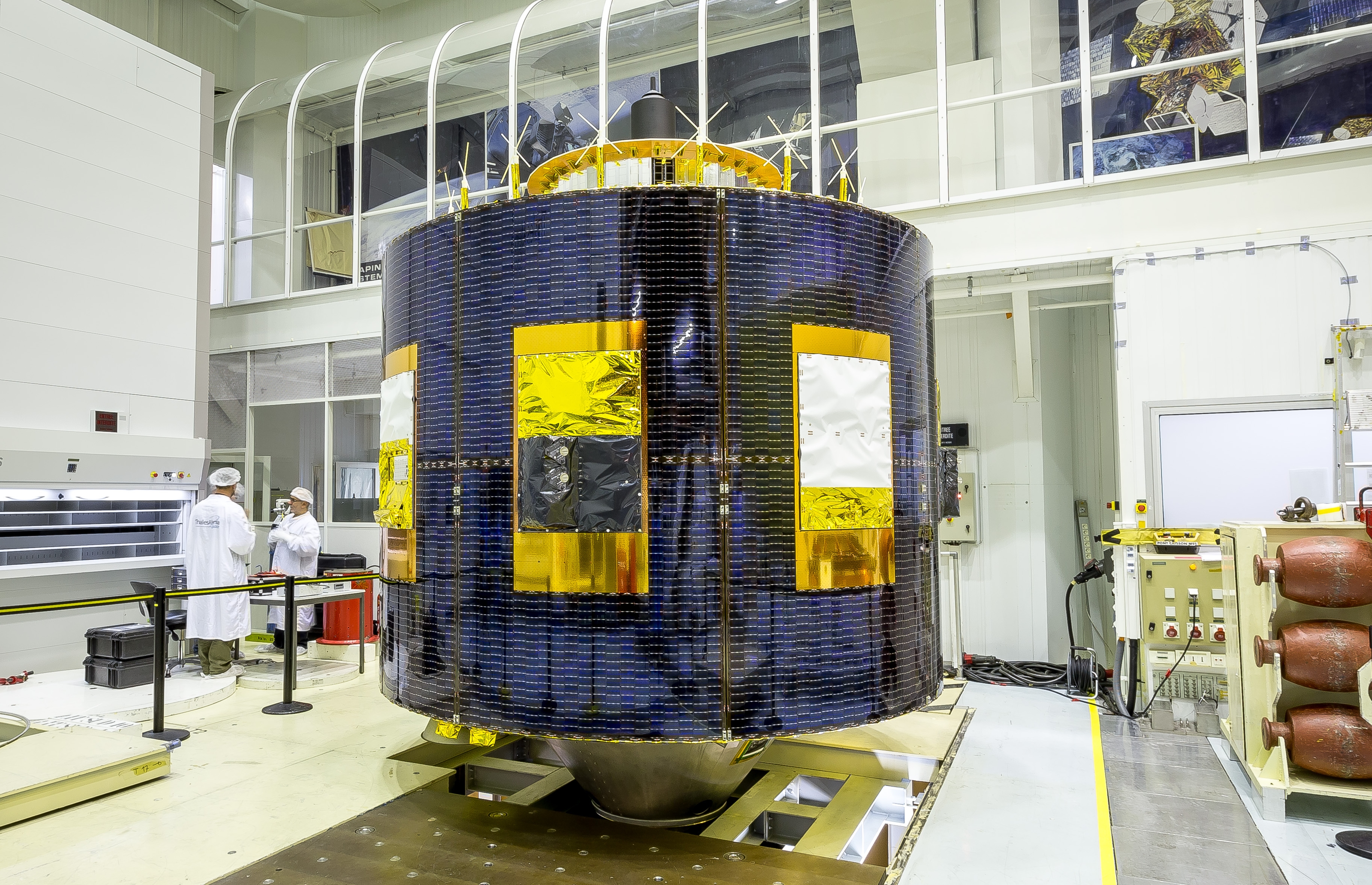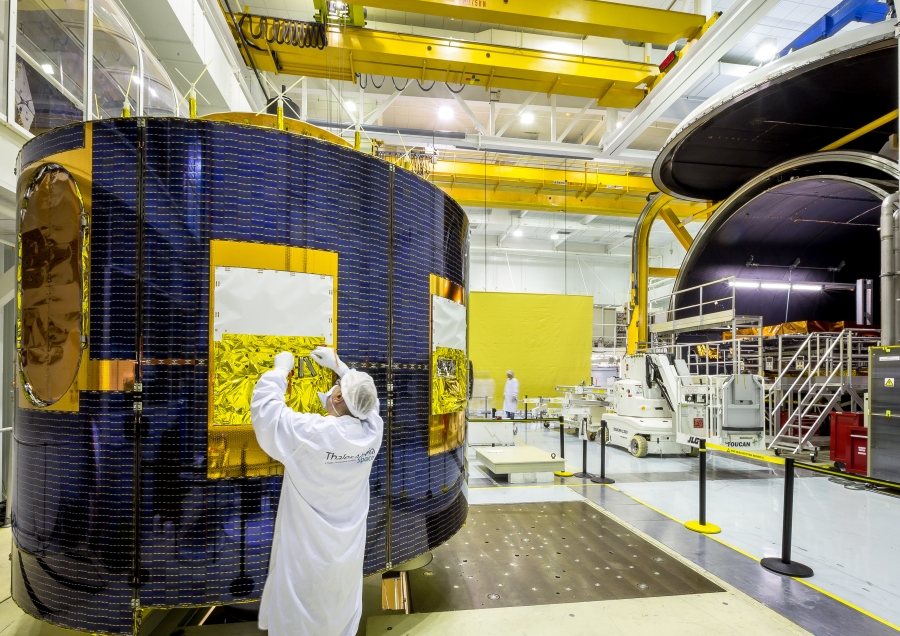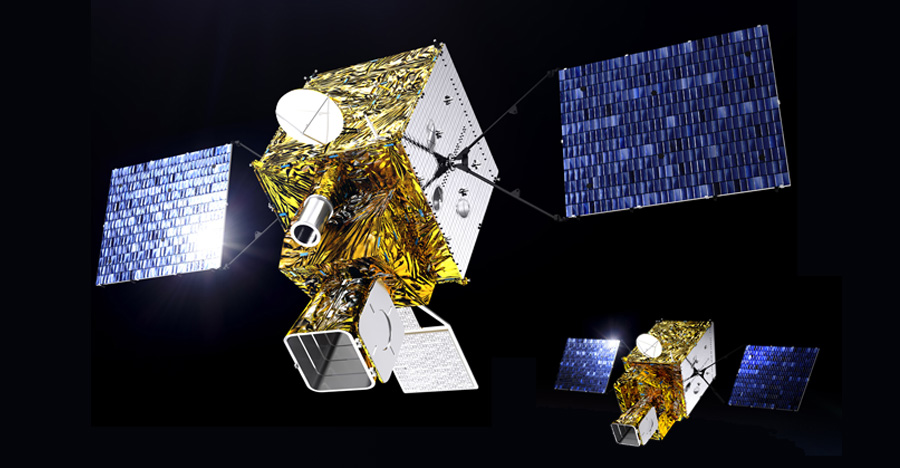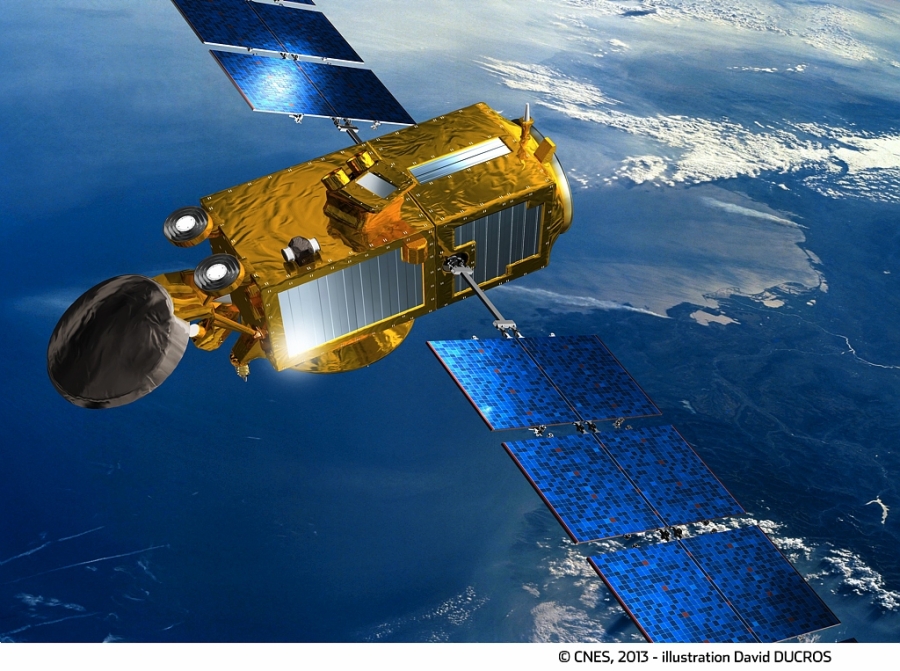MSG-4 at launch site in Kourou
Shipped from Thales Alenia Space's Cannes plant, MSG-4, the fourth and last Meteosat Second Generation (MSG) weather satellite, arrived at the Guiana Space Center in Kourou, French Guiana, on April 29th. Built by Thales Alenia Space for the European Space Agency and Eumetsat, the satellite is scheduled for launch in July 2015.
About MSG-4

MSG-4 is designed to provide meteorological data and also monitor the climate across Europe. It will be placed in geostationary orbit at the 3.4° West position, 36,000 kilometers above the equator, where it will carry on the mission assigned to these second-generation satellites: provide meteorological observation capabilities for Europe until 2020.
About the second generation satellites

Meteosat Second Generation (MSG) satellites have made a strong contribution to improving our analysis of weather data. These spin-stabilized satellites (at 100 rpm) incorporate a number of technological innovations. Meteorologists benefit from higher image quality, because of a significant increase in the number of observation channels, along with better radiometric performance and shorter revisit cycles.
The nominal assigned mission is currently handled by the MSG-3 satellite, which provides an updated view of the Earth every 15 minutes. At the same time, MSG-2 provides a "rapid scan service", delivering a reduced, Europe-centered image every five minutes.
MSG-1, launched in August 2002 and still operational, provides backup to ensure the continuity of these two missions.
Towards increasingly accurate meteorology
European meteorology has become increasingly accurate over the years, thanks to the advanced technology of the Meteosat satellite family. With the first-generation Meteosat satellites, images were updated every 30 minutes, a figure reduced to 15 minutes on the second generation. MTG (Meteosat Third Generation) will further reduce this refresh rate to 10 minutes, making weather forecasts increasingly accurate.
Thales Alenia Space, world leader in geostationary meteorology systems

As on Europe's first two generations of meteorological satellites, Thales Alenia Space is also prime contractor for the third generation, MTG, built in partnership with the German company OHB. The MTG system comprises six satellites, four imaging models and two atmospheric sounders. Including this latest generation, Thales Alenia Space will have built a total of 17 geostationary weather satellites: seven first-generation models, four second-generation and six third-generation.
Three Thales Alenia Space-built satellites dedicated to climate change monitoring and environmental management will be launched this year: MSG-4, Jason-3 and Sentinel-3A!
